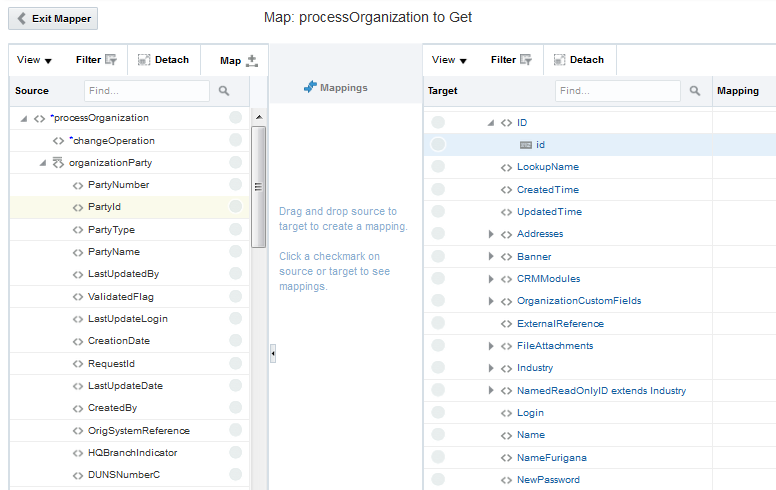About Mappings
One of the key tasks to any integration is defining how data is transferred, or mapped, between two applications.
In most cases, the messages you want to transfer between the applications in an integration have different data structures. A visual mapper enables you to map fields between applications by dragging source fields onto target fields. When you open the mapper for a request or response message in an integration, the data structures are automatically populated with the information pulled from the source and target connections. You can expand and the load data structure levels on demand to display additional levels. There is no limit on the levels of display.

Description of the illustration GUID-2A80EEFB-6539-4EEF-BA50-1DFD0A92ED3F-default.png
The maps you create are called transformation maps, and use the eXtensible Stylesheet Language (XSL) to describe the data mappings, which lets you perform complex data manipulation and transformation. A standard set of XPath functions are provided for you to define how data is modified when moving from one application to another. A specialized function is also provided for you to reference lookups directly from the mapper.
The mapper supports both qualified and unqualified schemas (that is, schemas without elementFormDefault=”qualified”). Elements and attributes with and without namespace prefixes are also supported.